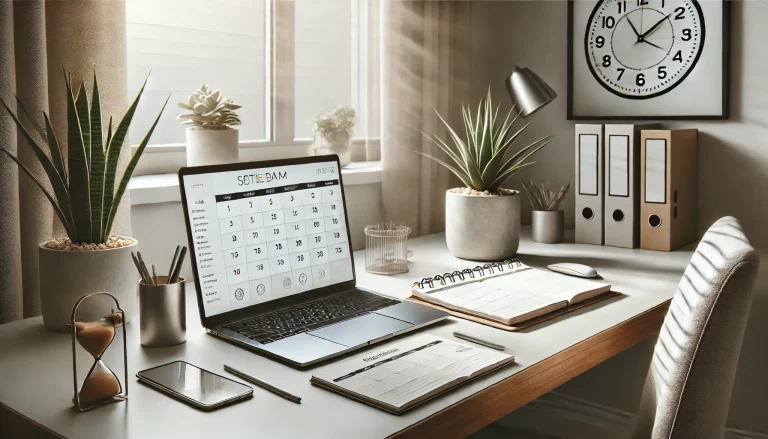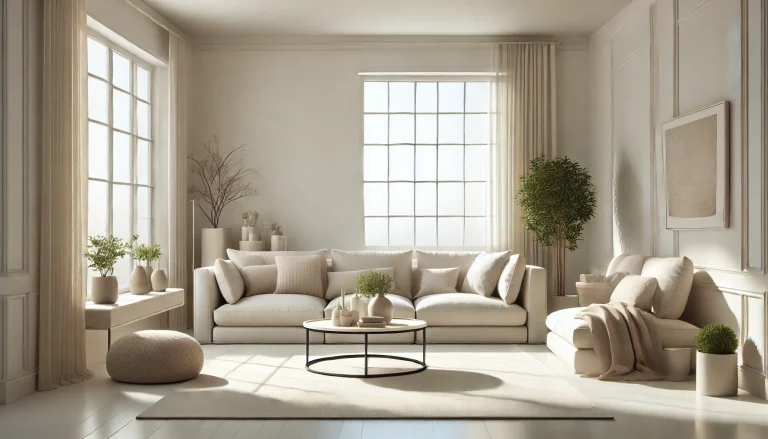

When it comes to home décor, minimalism offers a refreshing approach. Instead of overcrowding your space with numerous items, minimalist décor emphasizes simplicity, function, and beauty. A minimalist home is clean, calming, and free of unnecessary clutter, creating an environment where you can truly relax.
In this article, we’ll explore how you can achieve minimalist home décor that is stylish, functional, and peaceful.
Minimalism in home décor isn’t just about reducing the number of items in your space — it’s about creating an environment that reflects your values and lifestyle. It’s about living with fewer, more meaningful possessions and making thoughtful design choices.
Core principles of minimalist décor:
One of the easiest ways to create a minimalist home is by using a neutral color palette. Neutral tones such as whites, grays, blacks, and beiges help create a calm and peaceful environment. These colors are timeless and can be paired with accent colors when needed.
Tips for using neutral colors:
Neutral colors create a sense of serenity, making your home feel inviting and peaceful.
Minimalist décor is about fewer, better-quality items. Instead of filling your home with many inexpensive or temporary pieces, invest in high-quality items that will last longer and look better over time.
Things to focus on:
By focusing on quality, your home will not only look beautiful but also be comfortable and long-lasting.
Minimalist furniture emphasizes clean lines, functionality, and simplicity. When choosing furniture, avoid anything too ornate or cluttered with intricate details. Instead, choose pieces that are sleek, functional, and unadorned.
Ideas for minimalist furniture:
Choose pieces that enhance the space without dominating it.
Clutter can quickly ruin the effect of a minimalist home. Minimalism is all about keeping spaces clean and uncluttered, allowing the design and furniture to shine.
Tips for reducing clutter:
A clutter-free home feels more spacious, relaxing, and easy to navigate.
Lighting is an essential element in minimalist home décor. It sets the mood of a room and can completely change the atmosphere of your home.
Here’s how to use lighting in a minimalist home:
Good lighting will not only illuminate your home but also enhance its beauty and functionality.
Minimalist wall décor focuses on quality over quantity. Instead of covering every inch of your walls with framed pictures and art, focus on one or two pieces that make a statement.
Ideas for minimalist wall décor:
By decluttering your walls, you create an open, airy feel that adds to the minimalist ambiance.
Plants can be a wonderful addition to a minimalist home, but it’s important to keep things simple. Choose low-maintenance plants that bring a pop of green without overwhelming the space.
Tips for minimalist greenery:
Plants add life and freshness to a minimalist home, creating a connection to nature while maintaining simplicity.
One of the core principles of minimalist design is negative space, or the space left empty. Negative space is not empty — it’s part of the design and helps create a sense of balance and harmony in the room.
How to embrace negative space:
Negative space is essential in creating a sense of tranquility and order in your home.
Minimalist home décor is all about creating a space that reflects your values and allows you to live with intention. By focusing on quality, simplicity, and functionality, you can transform your home into a peaceful, beautiful environment that brings joy and serenity into your life.
Remember: a minimalist home isn’t about having less — it’s about making room for what truly matters.